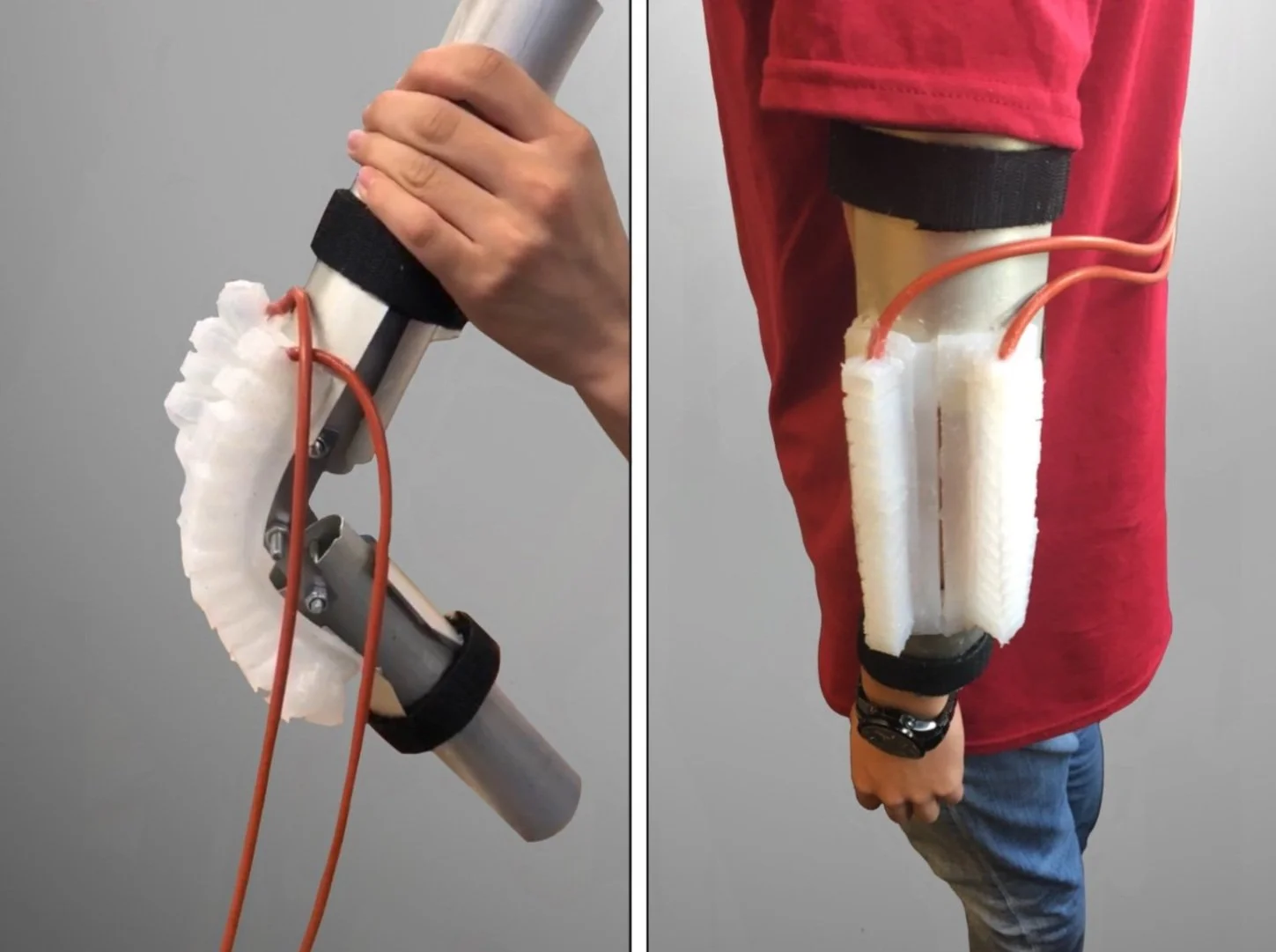Physical Therapy Arm Brace
Problem
Many physical therapy patients who have suffered severe injuries to their arms find PT frustrating and demoralizing, with younger patients finding heavy equipment intimidating.
Solution
We designed a soft-robotic, pneumatic-powered arm brace to complement traditional PT methods in a more approachable, lightweight, comfortable way.
Takeaway
This project deepened my interest in design, characterizing my first experience with rapid prototyping, user-centered design, and design presentation. As the team leader, I also gained practice in project management and cross-disciplinary synthesis.
Problem
This project took place as part of the Massachusetts Institute of Technology’s Edgerton Center, which runs a program for high school students called the Engineering Design Workshop. This course gathers local students to engage with design professionals and work on need-finding, prototyping, and iterating a solution in 5 weeks. While very fast paced, this workshop offered my first exploration into the design world and the design process. With three peers, my project group decided to design a solution aimed at improving the experience and the results of physical therapy for acute injury to a persons arms. Specifically, we explored the early stages of physical therapy for severe damage to a persons arm. While general physical therapy is often characterized by mobility tasks with minimal equipment, early therapy for severe damage often requires more involved technology. This issue was one that had been personally experienced by one of my group members, and so offered a strong starting point for gathering insightful ethnographic research. To strengthen our understanding of the problem, we also worked directly with physical therapy patients at Spaulding Rehab. From these sources, we learned how frustrating and demoralizing it can be for new patients to not see progress quickly. Also, for younger patients, some of the machinery used in early physical rehab to assist patients with movement were big, “scary” machines, often deterring younger patients from wanting to engage with therapy, undermining efforts for a faster, better recovery.
Solution
To tackle these issues, we designed a new and improved arm brace to be used along side conventional physical therapy methods. Current state of the art was described as heavy, big, and even “scary” by younger patients. We wanted to design something less noticeable, something more approachable that could be implemented at home or even out and about. With these criteria in mind, as well as our project goal of technical exploration, our proposed design focused on implementing a ‘soft-robotic’ solution, focusing on pneumatics to aid in arm movement instead of hydraulics or electronics.
For the last three weeks of this workshop, we worked on developing three key components; the soft robotic circuity and coding, the pneumatic components (silicone inflation cells), and the overall assembly (a mix of sewn nylon, circuits, aluminum plates, and silicone molding), as shown to the right. The design works by inflating a series of cast-silicone cells on the outside of an arm to help the elbow to bend by applying pneumatic force. The aluminum shown is a mounting point for the silicone, and attaches to a patients arm with Velcro straps. The piping leads from the pneumatic cells to an air pump and micro controller which would fit in a patient’s back pocket. The design produced low noise, is easy to wear and even conceal, and is much less noticeable that current state of the art technology used by rehabilitation centers like Spaulding.
Takeaway
This project was very fast paced, however getting to work with professional designers to learn about rapid prototyping, human-centered design, and design presentation has helped to shape my continued pursuit of design. My role in the team became that of team manager, and I became responsible for two key responsibilities, the first being time management. As this entire project took place over 5 weeks, staying on track and encouraging my team to wrap up different parts of the project by certain benchmarks was crucial for developing a fully-executed project by the end of the course. This required me to organize team meetings, understand all team-members expertise and personal contributions, and facilitate design compromises for the sake of time. My second responsibility was to facilitate the integration of all three components (circuits/coding, silicone, and the integration of both). I led the design work on laying out where each component would fit, how the pneumatics and electronics would interface, and how the entire project would fit onto a user in a comfortable and modular way. This required me to engage closely in project work led by other team members focused on both the silicone and the electronics, so as team manager, I was able to experience the design process for all three components, giving me a holistic view of the project. This experience led me to the understanding that I prefer to operate in this team manager role, facilitating cohesion between different project components and maintaining a timeline to adhere. I also had the pleasure of creating our team name, the ‘Pneumaddicts’ (pneumatics + addicts).

